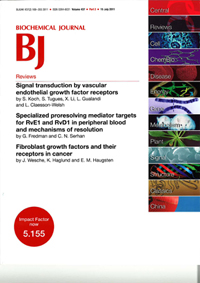V-ATPases (vacuolar H+-ATPases) are a specific class of multi-subunit pumps that play an essential role in the generation of proton gradients across eukaryotic endomembranes. Another simpler proton pump that co-localizes with the V-ATPase occurs in plants and many protists: the single-subunit H+-PPase [H+-translocating PPase (inorganic pyrophosphatase)]. Little is known about the relative contribution of these two proteins to the acidification of intracellular compartments. In the present study, we show that the expression of a chimaeric derivative of the Arabidopsis thaliana H+-PPase AVP1, which is preferentially targeted to internal membranes of yeast, alleviates the phenotypes associated with V-ATPase deficiency. Phenotypic complementation was achieved both with a yeast strain with its V-ATPase specifically inhibited by bafilomycin A1 and with a vma1-null mutant lacking a catalytic V-ATPase subunit. Cell staining with vital fluorescent dyes showed that AVP1 recovered vacuole acidification and normalized the endocytic pathway of the vma mutant. Biochemical and immunochemical studies further demonstrated that a significant fraction of heterologous H+-PPase is located at the vacuolar membrane. These results raise the question of the occurrence of distinct proton pumps in certain single-membrane organelles, such as plant vacuoles, by proving yeast V-ATPase activity dispensability and the capability of H+-PPase to generate, by itself, physiologically suitable internal pH gradients. Also, they suggest new ways of engineering macrolide drug tolerance and outline an experimental system for testing alternative roles for fungal and animal V-ATPases, other than the mere acidification of subcellular organelles.
* Este trabajo ha sido reseñado por la prestigiosa agencia Faculty of 1000 como artículo mejor evaluado (8/10, ‘Must Read’) en el campo Structural Biology – Membrane Proteins and Energy Transduction.



 English
English